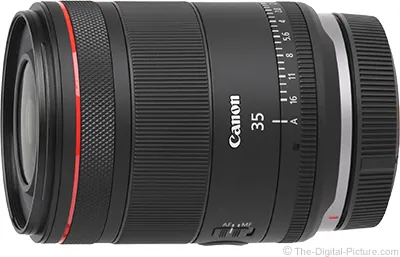3 out of 5? I listed 6 points so I'd ask you to please specify which points you disregard as "nothing burgers". Because I feel like none of these should be a point of concern in such an expensive lens.
For an L-series fast prime lens, it's relatively cheap. The EF 34/1.4L II launched at $1800, for comparison. Your expectations can be whatever you want them to be, up to and including optical perfection in a $50 lens. I prefer to be realistic in my expectations, and for the price of the RF 35/1.4 it appears to deliver (though I'm not personally interested in the lens).
It's probably subjective whether or not the Bokeh is below-average or "fine" but it should be exceptional! The extreme distortion and vignetting is also an issue.
I've seen bokeh samples, some are fine, some are what I'd call 'nervous'. True of most lenses, I've seen nervous bokeh with my EF 600/4L II (a lens costing 8x as much as the RF 35/1.4). There are lenses with consistently poor bokeh (e.g. catadioptric lenses), the 35/1.4L VCM isn't one of them.
And if you take a look minute 18:34 you can see how bad the backlight performance really is. That's sadly a fact!

Link with timestamp:
https://youtu.be/_a0A1R_xikU?si=l4wTnYUEkGhaWmmJ&t=1114
I can make pretty much any lens perform like that, if I have an axe to grind. Check out Bryan's flare testing, the 35/1.4 is not bad at all.
And there is one thing that simply cannot be disregarded. It's very annoying and feels like you own a cheap piece of plastic if your lens constantly loudly rattles. Even when it's in your backpack during a long hike for example. Or when you're just walking around the city perhaps even recording audio on another camera which would then pick up the rattling of the 35mm VCM.
Every RF lens with IS rattles, too.
As for the other issues, lateral CA is not bad, axial CA is definitely a problem (but one shared by most other fast primes). I'm surprised Canon didn't use a BR element, it controls LoCA very well in the EF 35L II and in the RF 85/1.2. But it probably kept the cost down, there's those realistic expectations coming up again.
Distortion, yes the lens has strong distortion before correction. After correction, it's fine. I have pointed out (many times!) that the RF 14-35/4 at 14mm after correction is just as sharp in the corners as the EF 11-24/4 at 14mm, and the latter has essentially no distortion. The RF 10-20/4 is also just as good in the corners as the far more expensive, larger and heavier EF 11-24. So where's the downside? In the mind of you and others, only. If you can show a concrete example of how an optically corrected lens (like the EF 11-24/4) is superior to a digitally corrected lens with a similar range, by all means do so.
@SwissFrank has asked for such an example more times than I can count, and no one has provided one. Maybe you'll be the first.
Similarly, both ultrawide and very fast primes suffer from vignetting, an aberration that is distinct from distortion (people tend to associate them because they affect the periphery of the image more, but so do many aberrations, e.g. coma and astigmatism). The RF 35/1.4L has about the same 3 stops as the EF 35/1.4L II, both of which are better than the 4 stops of the RF 50/1.2L and RF 85/1.2L.
So lots of nothing-burgers in your list of complaints. Probably enough to keep you from buying a lens you would not have bought anyway. Hey, Nikon has a 35/1.4 that costs only $600. Time to switch brands!
)

